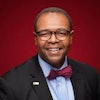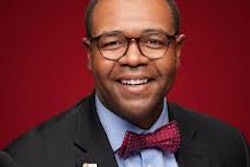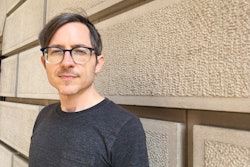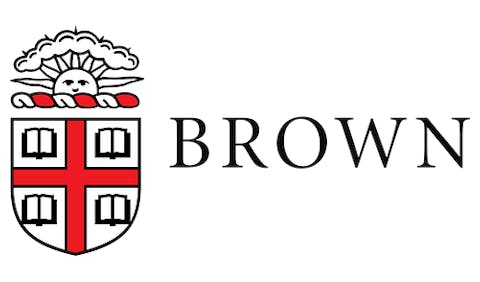R Dr. Steve D. Mobley, Jr.
Dr. Steve D. Mobley, Jr.
As a designer and formidable brand, Ralph Lauren has sought to sell a lifestyle in the realm of "Americana." In his attempt to convey the ideal of the "American Dream" through fashion, it has never been about just the clothes. Every oxford shirt, polo, and cable knit sweater often draped upon one's shoulder is a statement—a performance of white and affluent class structure. But many things can be true at the same time. Amid the critique condemning this line as elitist and obtuse, there is duality. Many wonder: Can Blackness even be part of this vision? Is now even the time?
To be clear, this is not the first instance the brand has placed Blackness on full display. This is the second SpelHouse drop. We must not forget how this fashion house deliberately and intentionally featured Naomi Campbell and Tyson Beckford in the '90s—before this time period, we had not seen Black models en masse at the helm of major ad campaigns for any major designer. But still, this Ralph Lauren moment feels different for myriad reasons.
This particular collaboration centers Blackness and HBCUs as an invitation into a world of what is or could be Americana. Then comes the rub. Black communities in the American societal context have a tenuous relationship with this country. We built the structure but are rarely given our due, time and time again. While this collection can be seen as audacious, the commentary persists, stemming from the uncomfortable topic of class within Black communities.
This newest fashion line has conjured questions about who has access to this brand of Blackness. Why these schools? Why Oak Bluffs and the Black elite—in this time and space? Is it tone deaf? Social media critics have deemed it divisive and even anti-Black.
I enter this conversation from a liminal space. I am now a tenured professor at an HBCU who holds a Ph.D., but it has been a journey. Even as a researcher who explores class and classism at HBCUs, I have my own questions. I still wrestle with them daily. I was a low-income student and proud Howard University graduate. Like Spelman and Morehouse, HU is an "elite" HBCU space. I have also vacationed in Oak Bluffs for a decade now. Talk about dichotomy!
I can still remember my first day at Howard. August 18, 2001 was freshman move-in. I noticed my environment shift immediately regarding economic and social status—from one extreme to another. Tremendous differences were everywhere. While my mother and I had to scrape together money to rent a U-Haul to move into my dorm, my fellow classmates were arriving in Land Rovers and Escalades, some with Louis Vuitton luggage in tow. I immediately began to question myself and my surroundings. Where is everyone from? Why do I feel so different? Do I belong here? I was self-conscious. I remember whispering to my mother, "Who are these people?" She whispered back, "Don't worry baby, you will find out soon enough."
Class has a way of smacking you in the face, and I felt the sting. Many times, I still do.
So here we are, in this moment. The "hidden injuries" of class are very real. Discussing social class issues is uncomfortable, especially for Black Americans. It has been offensive or foreign to many to even think there is a class structure in Black America. This is most likely rooted in the fact that minorities who have been oppressed do not want to be perceived as oppressive.
But here come my questions—ways we should continue to interrogate Blackness and class performance. In the present, we as a Black community are talking at each other. There are extremes present, both presenting contradictions. Who does this argument serve?
Prior to integration, the Black elite and working-class folks lived alongside each other. Post-Brown v. Board of Education, Black communities were upended. White flight and Black flight happened together. Let us bring this to the present. Not long ago, we celebrated the Met Gala and their homage to Black dandyism. The Ralph line currently under discussion derives from this very aesthetic. Another notion that can be posed is that of white assimilation. How can we hold the Met Gala dear and then dismiss the whiteness apparent in this display?
While Black communities constantly assert that we are not a monolith, we tend to critique anything that causes discomfort. Yes, there is mysticism that surrounds HBCUs, Martha's Vineyard, and the respectability politics and allure in this "thing." But it appears that at the heart of this, perhaps we cannot get past ourselves. Black folks are poor. Black folks are rich. And we are everything in between—we can just be. Why can't we just be?
At the end of the day, this recent Ralph Lauren line depicts that we can live lives of leisure. That, in itself, can be seen as resistance. It is real life for some Black folks, and we should be able to be okay with that—but can we?
These are the questions, and I am hopeful we can continue to have meaningful discourse. I welcome it.
______________
Dr. Steve D. Mobley, Jr., is an associate professor & program director of Higher Education & Student Affairs in the Department of Advanced Studies, Leadership, & Policy in the School of Education & Urban Studies at Morgan State University.


















